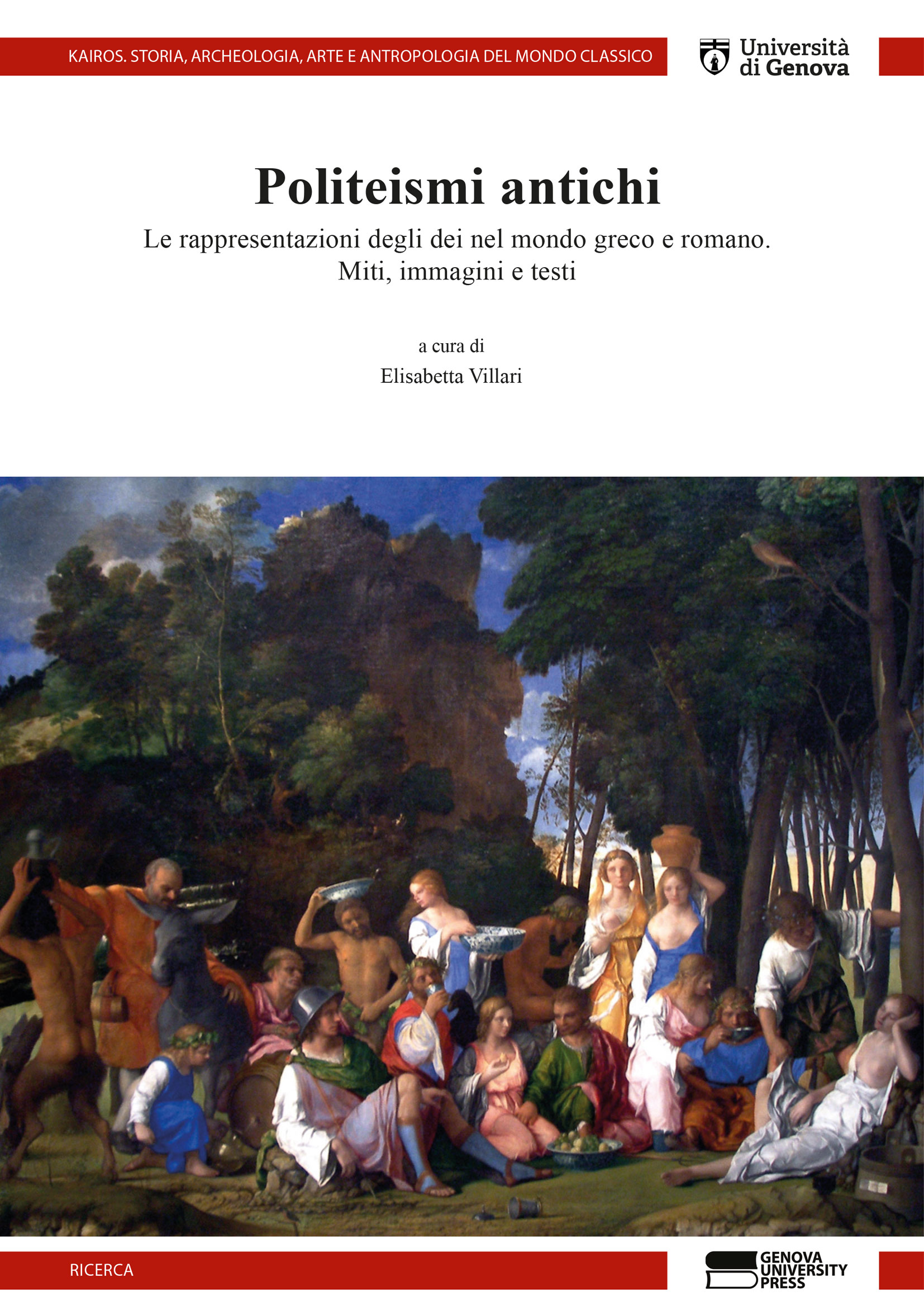Le rappresentazioni degli dei nel mondo greco e romano. Miti, immagini e testi
a cura di Elisabetta Villari
dicembre 2019
collana Kairos. Storia, Archeologia, Arte e Antropologia del mondo classico
linea editoriale Ricerca
area tematica Umanistica
area disciplinare Scienze dell'Antichità, Filologico-Letterarie e Storico-Artistiche
224 pagine
ISBN 978-88-94943-94-8 | € 22,00
e-ISBN (pdf) 978-88-94943-95-5 | open access
Per acquistare il libro
Per accedere all'e-book (pdf)
Il libro
Il volume sviluppa in tre sezioni alcune questioni centrali nel dibattito contemporaneo sul politeismo greco e romano: come si è iniziato a fabbricare gli dei e le loro immagini nel mondo greco e romano? come è organizzato il mondo degli dei in Omero? La prima parte è dedicata alla Grecia, la rappresentazione omerica come punto di riferimento per i poeti e gli artisti successivi.
D.Bouvier presenta il tema di un dio che forgia le immagini degli altri dei, E. Pellizer affronta i daimones, per esaminare altri casi di iconografi e di origine omerica, G. Lentini lavora sull’importanza politica della rappresentazione delle divinità in Omero. La seconda parte è sul mondo romano dedicata al dialogo con M. Bettini: come i romani hanno accolto gli dei greci, e che cosa ne hanno fatto? Come i Greci integrati al mondo romano hanno accolto i Romani e i loro dèi? Cosa è successo quando gli dei dei Romani hanno preso in prestito il nome, epiclesi, le forme, i rituali degli dei greci? Partendo dal nesso fra il nome degli dei e la loro funzione Perfigli analizza la natura e le caratteristiche delle loro epifanie. La terza sezione del libro con i due contributi di E. Villari sul politeismo come oggetto ‘politico’ e sulle rappresentazioni degli dei ritorna al mondo greco per cercare di ripercorrere le attuali problematiche teoriche e tracciare delle differenze con il mondo romano mettendo a punto una riflessione critica.
In three sections, this volume tackles some of the central questions in the contemporary debate on Greek and Roman polytheism: how did Greeks and Romans begin to shape their gods and the images representing them? how is the world of the gods structured in Homer? The first part is devoted to Greece, with Homeric representation as a crucial point of reference for later poets and artists.
D. Bouvier explores how a Greek god may portray and create images of other gods, E. Pellizer offers some reflections on daimones, in order to analyse the consequences of other iconographies of Homeric origin, G. Lentini works on the political import of the portrayal of the gods in Homer. The second part concentrates on the Roman world, through a dialogue with the work done by M. Bettini: how did the Romans welcome the Greek gods and what were the consequences? How did the Greeks within the Roman world welcome the Roman gods? What happened when the gods of the Romans borrowed the name, the epiclesis, the forms and rituals of the Greek gods? Starting from the nexus between god’s name and god’s function, M. Perfigli analyzes the nature and characteristics of divine epiphanies. The third section of the book includes two contributions by E. Villari, one on Polytheism as a ‘political’ object and the other on representations of the gods, that return to the Greek world in order to track current theoretical problems with attention to their diff erence in the Roman world, thereby honing critical reflection.
Curato da
Elisabetta Villari, UNIGE (DIRAAS) insegna Antropologia dell’immagine del mondo greco, e antropologia del mondo antico. È stata invitata all’ENS a Parigi e all’UCSC in California come visiting professor. Ha tenuto seminari anche all’EPHE, all’INHA a Parigi e all’EHESS ed ha svolto conferenze in molte università straniere. Dal 2005 ha organizzato a Genova una serie di incontri internazionali: le Giornate Warburghiane in collaborazione con istituzioni italiane e straniere. Le sue attuali linee di ricerca sono: il paesaggio e il sacro, e l’antropologia dell’immagine del mondo greco.
